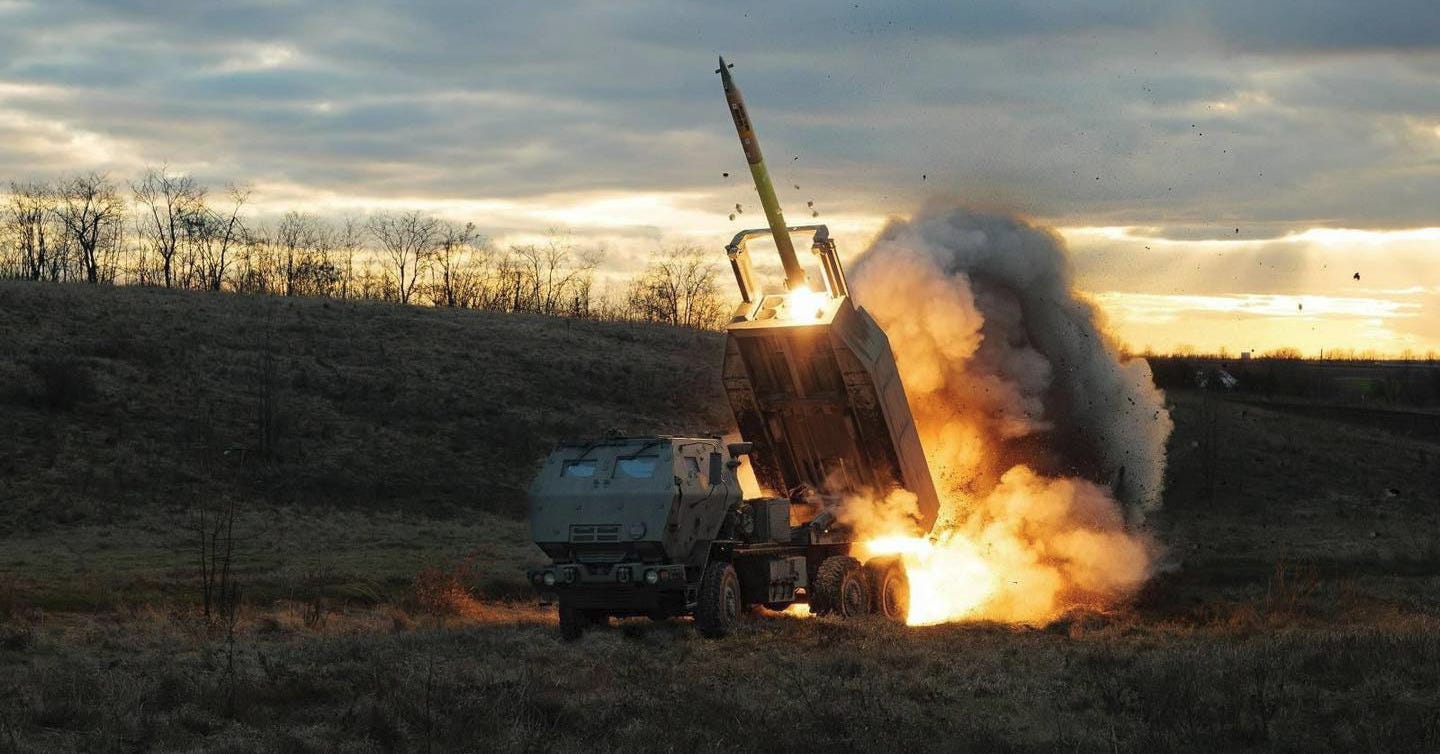A Russian Troop Convoy Got the HIMARS Treatment—20 Russians Died
Ukraine fires its HIMARS sparingly as rocket stocks run low
A Russian troop convoy with at least two military trucks and three passenger buses was motoring through Makiivka, 20 miles from the front line in Russian-occupied eastern Ukraine, when a Ukrainian High-Mobility Artillery Rocket System took aim on Friday.
The wheeled HIMARS fired several rockets, peppering the convoy with hundreds of thousands of tungsten fragments and reportedly killing 20 Russians and wounding others.
“We didn’t have time to evacuate,” one survivor explained in a video of the bloody aftermath, helpfully translated by WarTranslated. “I did what I could—was putting out the flames, pulling people out” of the burning buses.
It was an unusually precise strike for the wheeled HIMARS and its 660-pound M30/31 rockets. “Feels like it hit the bus while it was moving,” the survivor noted.
A convoy packed with Russian troops is exactly the kind of target Ukraine’s roughly three dozen surviving HIMARS are shooting at as the Ukrainian army burns through the stock of M30/31s the administration of former U.S. Pres. Joe Biden donated to Ukraine before Donald Trump took office in January.
Trump’s administration hasn’t approved any additional aid to Ukraine, but has largely allowed the aid Biden approved to continue flowing into Ukraine. It can take months or even years for U.S.-donated munitions to reach Ukraine.
Russian drone crews have gotten better at finding Ukraine’s HIMARS, and Russia’s Iskander missile batteries have gotten better at striking the wheeled launchers, which can hit targets from as far away as 57 miles. The Ukrainians have lost at least four of their 43 HIMARS.
But strikes on launchers isn’t the biggest threat to Ukraine’s HIMARS force. At present, the HIMARS strictly fire U.S.-made rockets, six at a time from a single pod. Unless the Trump administration donates more rockets or gives Ukraine permission to purchase rockets, the HIMARS batteries will eventially run out of ammunition.
Unless, of course, Ukraine can find another source of rockets that isn’t the United States.
Accurate intelligence
It’s unclear how the Ukrainian rocketeers knew where the convoy was. “From the available information, the [Ukrainian military] uses a variety of reconnaissance tools to locate and identify suitable Russian targets,” explained Morgan Douro, an analyst with the Royal United Services Institute in London.
“An innovative method is the use of mobile phone software that enables Ukrainian citizens to report the location of Russian troops using an app. This information is often shared with artillery systems or through the chain of command using applications like Google Meets.”
It is then shared with a U.S. base in Europe, where operators provide precise targeting data from satellites and other assets, as well as target mensuration, which is necessary for the launchers to conduct an engagement and to shorten the targeting chain. This is fed into the missiles and then they are launched—the whole process takes only a few seconds.”
Precious rockets
It’s also unclear how many of M30/31s Ukraine has received, how many it has fired and how many it has left. The Biden administration spent $1.2 billion replacing HIMARS-compatible rockets it sent to Ukraine, which should translate into around 7,000 rounds.
It’s possible the Americans didn’t replace every rocket they donated to Ukraine, however—so it’s not inconceivable that Biden pledged around 10,000 M30/31s to Ukraine before January.
At their maximum realistic rate of fire, a battalion with 16 HIMARS—the Ukrainian army has at least two battalion-equivalents—fires around 200 rockets a day, according to retired U.S. Army Gen. Mark Hertling. The Ukrainian army could easily fire 400 M30/31s every day.
That would’ve depleted a stockpile of 10,000 rockets in less than a month. The implication, of course, is that the Ukrainian army doesn’t fire M30/31s at the maximum possible rate. Instead, it saves the HIMARS for the most urgent missions—firing quickly at fleeting targets with high military value. Russian troop convoys, for example.
the Ukrainians use their HIMARS sparingly—and thus may have rockets in reserve. How many rockets may be in reserve is a mystery, however, and prudent Ukrainian planners would already be looking for alternatives to the American-made M30/31s.
There are options, in theory. The United Kingdom, Germany, Italy and France all operate American-style launchers and could donate HIMARS-compatible rockets from their own stockpiles. Even that would be a stopgap, however, as European armies are notorious for the thinness of their ammunition stocks.
German industry has expressed interest in producing HIMARS rockets. But the German factory could take years to get running. Even when it is running, it might import parts from the United States. The U.S. government could leverage export controls to block the finished rockets from going to Ukraine.
British and French industry are also working on locally-made ammunition for their countries’ M270s. It’s unclear how quickly these European rockets could enter production—and they too might be subject to U.S. regulations.
The other possibility is Turkey, whose industry has developed—but not yet produced in meaningful quantities—a HIMARS-compatible rocket called the SAGE 227. Would Turkey put the SAGE 227 into production on Ukraine’s behalf?
Unclear. But it is clear that Ukraine’s HIMARS batteries are in danger. And Russian missiles, which so far have knocked out the wheeled launchers at a rate of one or two a year, aren’t remotely the biggest threat.
Read more:
On the Same Day, Russia and Ukraine Destroy Each Other's Best Rocket Launchers: Scratch 1 HIMARS and 1 KN-09
Russia and Ukraine swapped hits on their best rocket launchers on or just before Tuesday.






